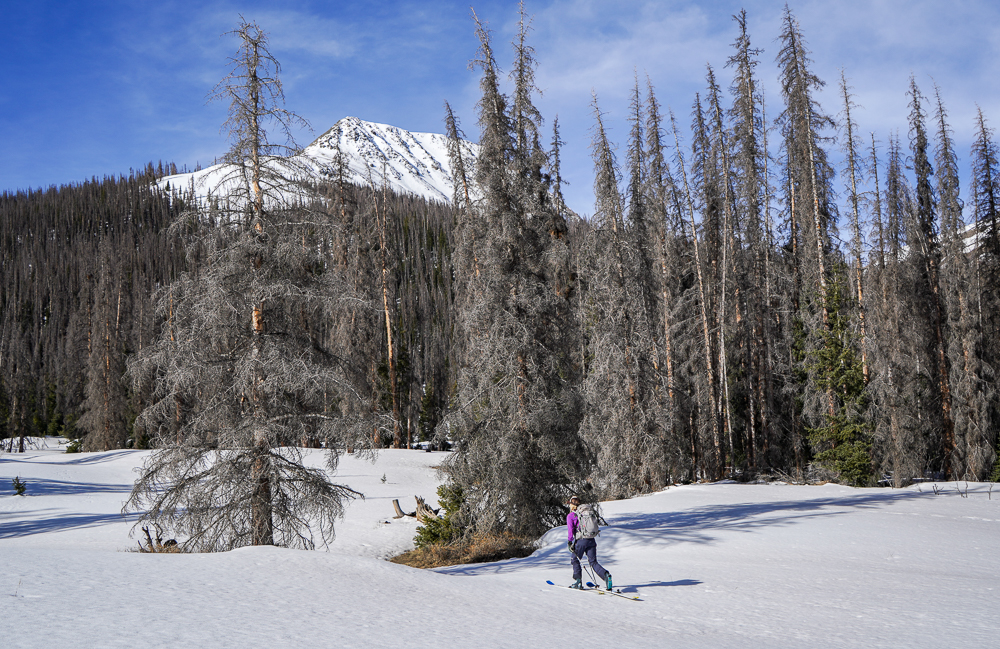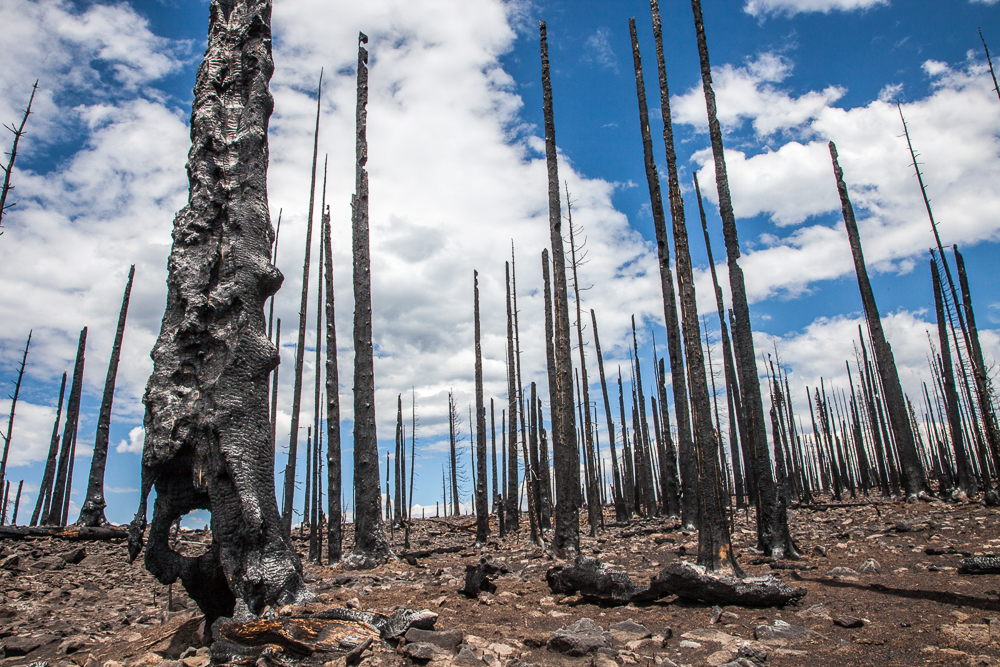
Wildfire Mitigation and the Huts
10th Mountain Huts
May 7, 2024

How the TMDHA continues to adapt to a changing climate and elevated risk
On December 30, 2021, authorities received a call about a small grass fire outside of Superior, Colorado. Less than 12 hours later, the Marshall Fire burned more than 1,000 homes, becoming the state’s most destructive in terms of structures lost.
Witnesses reported seeing the Marshall Fire consume football-field lengths of land in mere seconds. Its rapid spread and destructive force were said to be exacerbated by wind and a dry landscape— hardly unusual conditions for our state.
Wildfire risk is familiar to Colorado, but the frequency and size of events like the Marshall Fire have been increasing in recent decades. According to the Colorado Division of Fire Prevention & Control, the 20 largest wildfires (by acreage) in our state’s recorded history have all occurred in the years since 2001.

Experts point to several reasons for this trend of larger and more destructive wildfires. For most of the 20th century, federal and state land managers implemented strict fire suppression policies. The focused effort on prevention allowed natural fuels to build up that might have burned away if smaller natural fires had been allowed to run their course through the years.
In recent decades, that approach has been modified to allow wildfires to burn when and where appropriate—in wilderness settings, when structures aren’t at risk, etc. The acceptance of fires as part of the natural cycle has proven beneficial, but the fuel buildup from decades of suppression still looms as a threat.
More significant, though, are the increasing temperatures that have altered our natural landscape. According to a recent Colorado Water Conservation Board report, from 1980 to 2022, our statewide annual average temperatures warmed by 2.3° Fahrenheit.
That’s a significant amount of warming. Like any organism, our forests have evolved to a specific temperature window. When the temperature increases, forests, and soil lose moisture to the atmosphere through evapotranspiration. Trees in this warmer and drier environment are more susceptible to wildfires. The stress from these conditions leaves them more vulnerable to disease and beetle infestation, which can kill entire forests, creating more dry fuel.
These factors elevate the risk of more destructive, larger wildfires. One location that is experiencing this acutely is the White River National Forest— where our beloved 10th Mtn Huts are located.
Since Margy’s and McNamara huts opened in 1981, wildfire mitigation has been a significant focus for the 10th Mountain Division Hut Association. We’ve considered it a high priority to increase the resilience of our huts to wildfire, protect the lives and safety of firefighters and hut visitors should an incident arise, and reduce the risk of losing a hut.
Our plan has been continually revised and augmented for more than twenty years and follows guidelines broadly accepted by the State of Colorado, the US Forest Service, and insurance companies.

A fire mitigation plan starts with obvious steps: thinning trees, pruning, and removing fuels— creating a defensible perimeter around each hut. Continued maintenance with regard to removing dead trees, fallen trees, and additional combustible materials is ongoing, with the goal of creating a fuel-free environment around the huts, thus reducing the ignitability of the huts themselves.
Capital improvements are always made using non-combustible materials such as metal, rock, cement, or more fire-resistant hardened woods. When appropriate, living trees around the huts have been treated to protect them from beetle infestation.
In 2010, to make the forests surrounding the huts more resilient against insects, disease, and drought, we completed a detailed study of the composition, age, and condition of the broader forests around each hut. From that plan, additional targeted thinning and removal of trees was done to promote the regeneration of successive species— improving diversity and resiliency, which experts believe can reduce the severity of fires.
More recently, we have opted to install wildland fire caches at each hut. These caches include enough aluminized fire wrap to adequately wrap the entire hut, precut plywood to cover large openings and windows, and tools and equipment to allow crews to install these materials on short notice and defend a hut.
Is it enough? According to Bjorn Dahl, a retired USFS Forester and 10th Mountain Board Member, “Our objective with the huts is to maintain a certain experience—it’s backcountry experience—and we don’t want to change that. Yet we want to protect our facilities the best we can. The huts are in a high-risk environment, but we can minimize that risk. And I think we’re in a pretty good place.”
But it will always be a work in progress, and continued adaptations and revisions of the plan will have to be made in the years ahead as conditions change. By 2050, Colorado’s statewide annual temperatures are projected to warm by 2.5 to 5.5 F, which begs the question—what will the state of our forests, the wildfire situation, and our mitigation plan look like then?
https://dfpc.colorado.gov/sections/wildfire-information-center/historical-wildfire-information